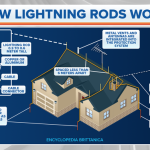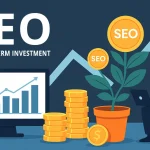When Sarah and Daniel began looking at schools for their daughter, they thought they had a good handle on the numbers. They’d heard the phrase “private school fees” tossed around in casual conversation, but in their minds, it was just a matter of paying for smaller class sizes and perhaps a better library. Then they sat down with a spreadsheet. And suddenly, they weren’t just comparing schools—they were comparing the cost of a second mortgage.
That’s the thing about private school fees: they’re more than just a number. They’re a reflection of values, priorities, and, increasingly, the realities of modern education.
The Layers Beneath the Price Tag
When people hear “private school fees,” they often think only of tuition—the headline figure printed on glossy brochures. But like buying a car, tuition is just the base model. The optional extras can be surprising:
- Enrolment fees (often non-refundable)
- Uniforms (which can rival the cost of a tailored work wardrobe)
- Books and stationery
- Technology (laptops, tablets, specific software)
- Extracurricular activities like sports teams, music lessons, and overseas trips
- Building levies or “capital contributions” that go towards maintaining facilities
In some schools, the ‘extras’ can add 20–30% to the annual cost. It’s the difference between thinking you’re paying $15,000 a year and realising it’s closer to $20,000.
Why Parents Pay It Anyway
On paper, private school fees can look daunting. But talk to parents, and you’ll hear about the intangible returns:
- Smaller class sizes mean more individual attention.
- Specialist programs in arts, languages, or STEM that public schools might not offer.
- Facilities—think Olympic-sized swimming pools, robotics labs, or performing arts theatres.
- Networks—for some, the old-school tie still matters for future opportunities.
One Melbourne father I spoke to described it as “buying time and focus.” He believed that smaller classes and better resources gave his daughter a few extra hours of teacher attention each week—something priceless to him.
The Geography of Cost
Private school fees vary wildly depending on location. In capital cities, especially Sydney and Melbourne, elite schools can command over $40,000 a year for senior students. Move to a regional area, and the figure might drop to under $10,000.
In the UK, the average day school fee is around £15,000, while in the US, tuition at top private schools can rival Ivy League universities—often exceeding $50,000 annually.
This variation isn’t just about the quality of education—it’s tied to land values, operating costs, and the prestige of the institution.
Rising Faster Than Wages
One challenge families face is that private school fees tend to rise faster than average wages or inflation. In Australia, for example, fees at some schools have increased by 3–5% annually over the past decade. That’s enough to outpace many people’s salary growth.
If you start paying fees when your child is in kindergarten, by the time they reach Year 12, the annual cost could be 40–50% higher than when you began. For families with multiple children, financial planning becomes even more critical.
Sacrifices Behind the Scenes
While glossy brochures often show smiling children on pristine lawns, there’s a quieter side to the story. Many families make significant sacrifices to afford private school fees:
- Delaying home renovations
- Driving older cars
- Skipping big holidays
- Taking on extra work or side hustles
One Sydney couple told me they’d sold their investment property to cover their sons’ high school years. “It’s like choosing between bricks and books,” the father joked—though he admitted it was a serious decision.
Are the Outcomes Guaranteed?
Here’s where it gets interesting: paying high private school fees doesn’t guarantee academic success or a dream career. Research consistently shows that while private schools often have higher average results, the gap narrows significantly when you factor in socio-economic background.
That doesn’t mean the investment isn’t worthwhile—it just means the return is more about environment, opportunities, and networks than an automatic academic edge. A motivated student in a public school can outperform a disengaged student in the most prestigious private institution.
The Middle Ground: Scholarships and Bursaries
For families who value a private education but can’t justify the full cost, scholarships can be a game-changer. These can be awarded for academic excellence, sporting talent, musical ability, or even community leadership. Some schools also offer means-tested bursaries, reducing fees for families in financial need.
Applying isn’t always straightforward—it may involve exams, auditions, or interviews—but the savings can be substantial. In some cases, scholarships can cover 50–100% of tuition.
The Emotional Factor
Money aside, choosing a school—private or public—often comes down to emotional instinct. Parents might choose a school because it “feels right” when they walk through the gates. They might see students greeting each other warmly, hear laughter in the playground, or meet a teacher whose enthusiasm is contagious.
This intangible element can make the decision more personal than financial spreadsheets alone suggest.
A Long-Term Perspective
Private school fees don’t exist in a vacuum—they’re part of a bigger conversation about the value of education and what we want for our children. Some parents see them as an investment in future earnings potential; others view them as a way to provide a nurturing and enriching environment during formative years.
The key is recognising that it’s not just a financial decision—it’s a lifestyle choice. It affects where you live, how you spend, and even how you work.
Beyond the Numbers
Private school fees can be intimidating, especially when you add up the long-term commitment. But behind the dollar signs are stories of aspiration, sacrifice, and hope. For some families, it’s about chasing academic excellence. For others, it’s about community, opportunities, or giving a child the kind of experience they themselves never had.
As Sarah and Daniel discovered, the decision wasn’t just about whether they could afford it—it was about whether they believed it was worth it. And that’s the question every family must answer for themselves: not just “How much will it cost?” but “What will it mean for us?”







